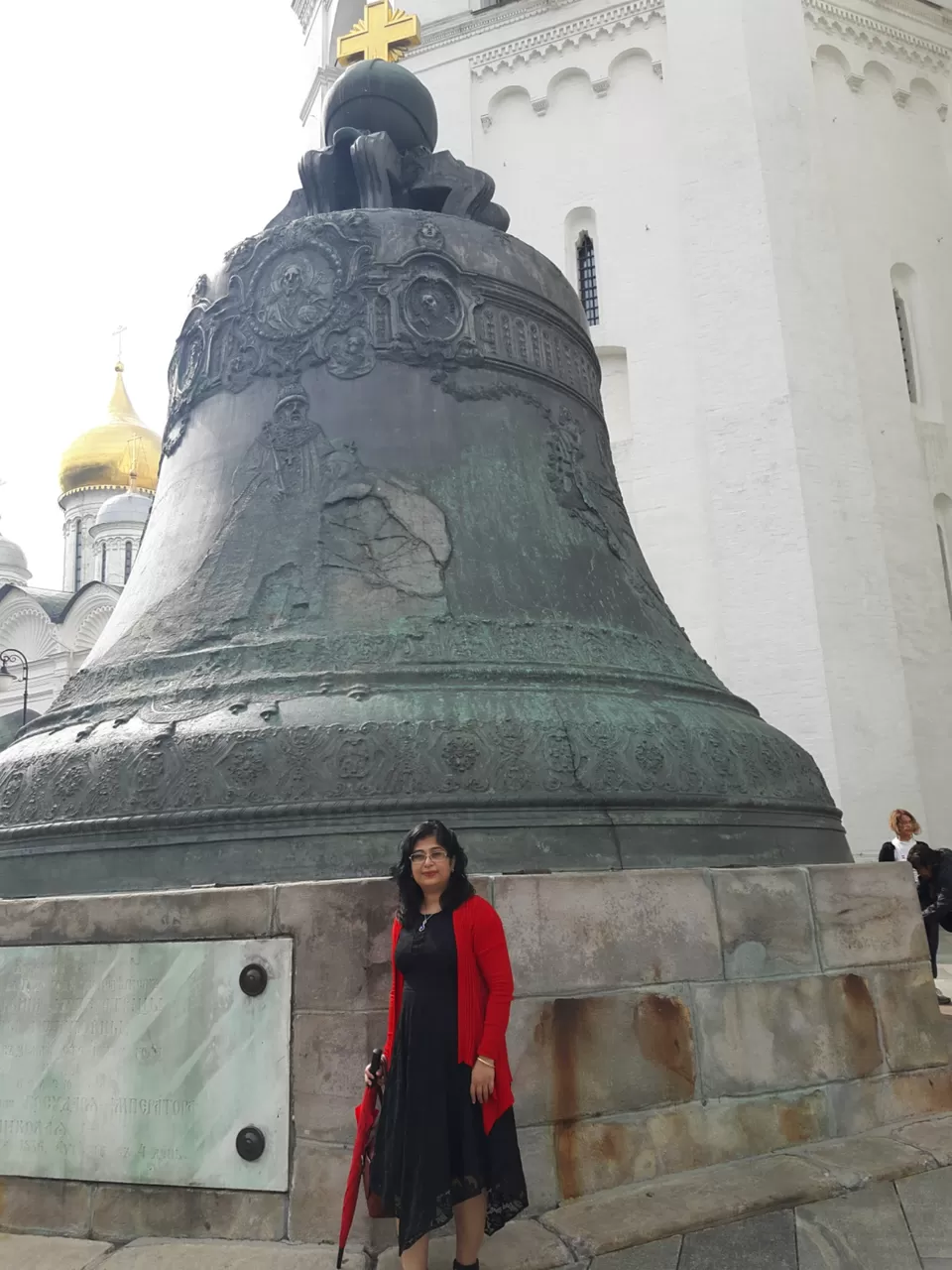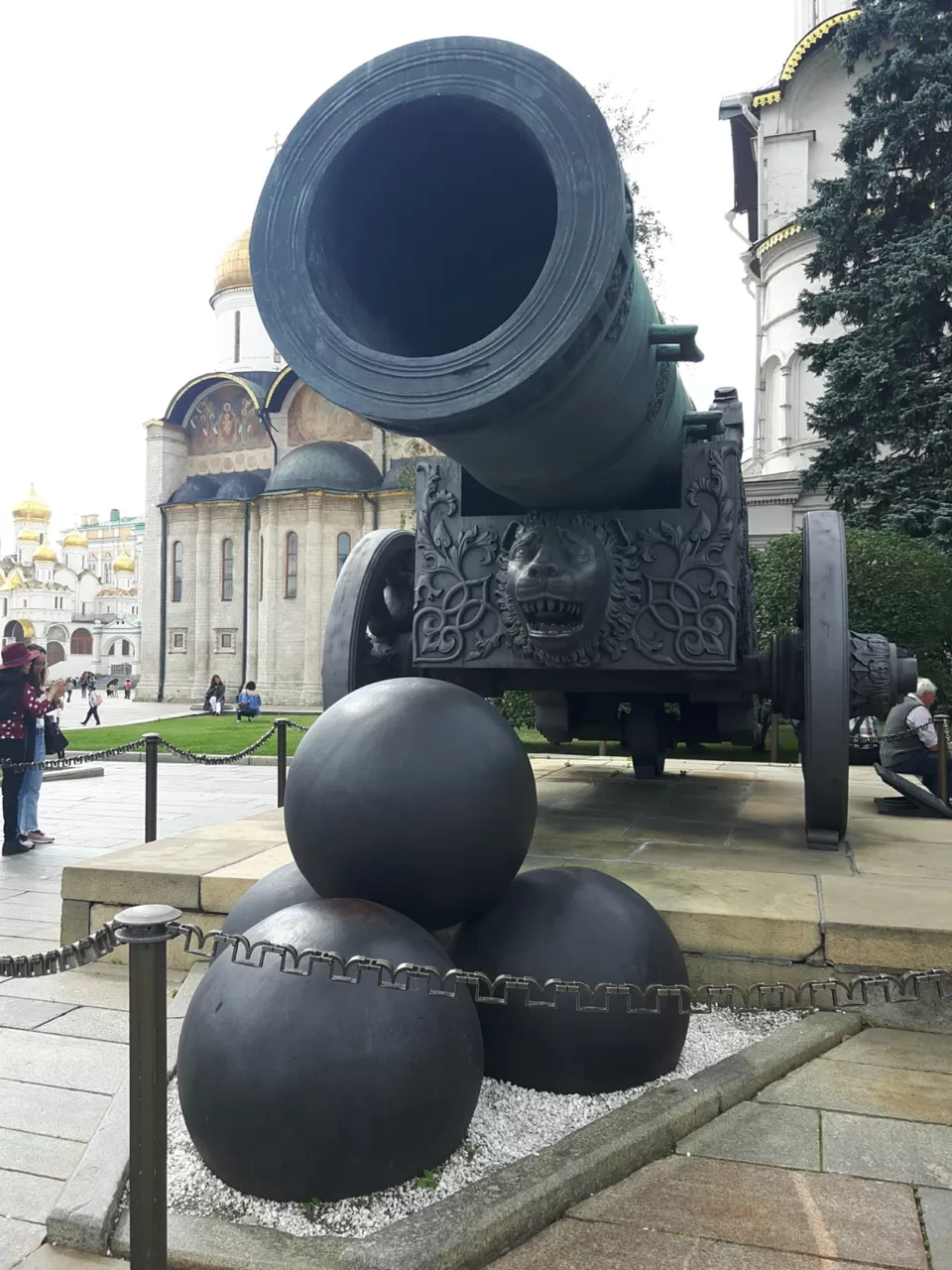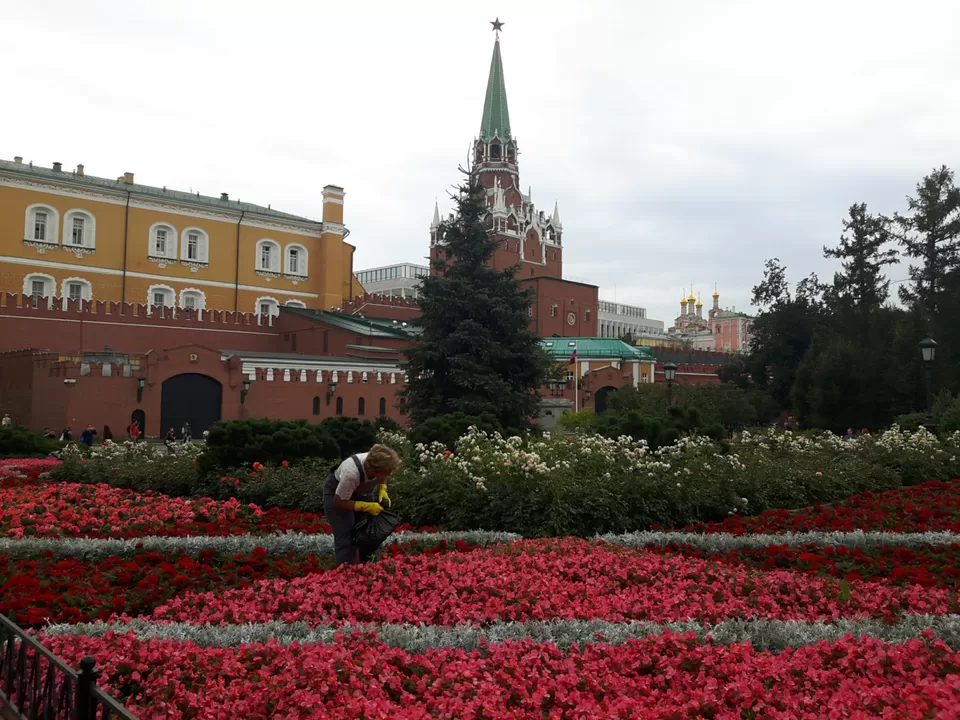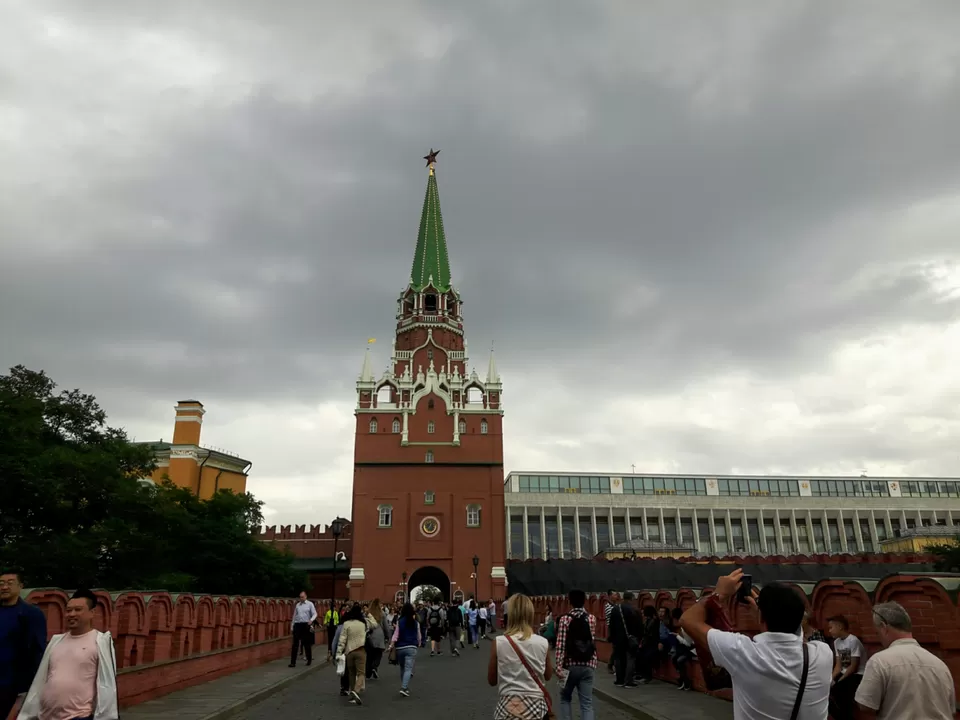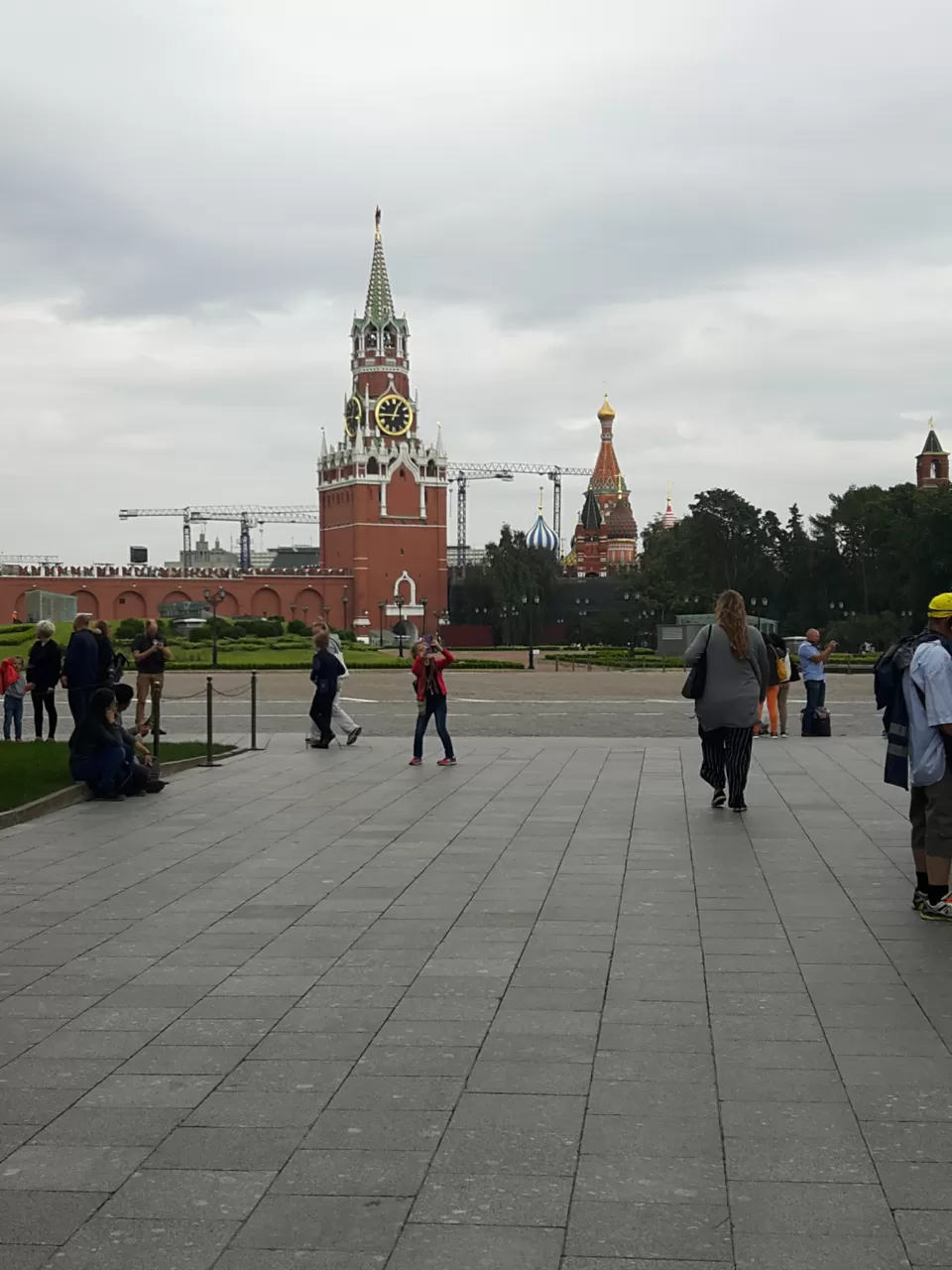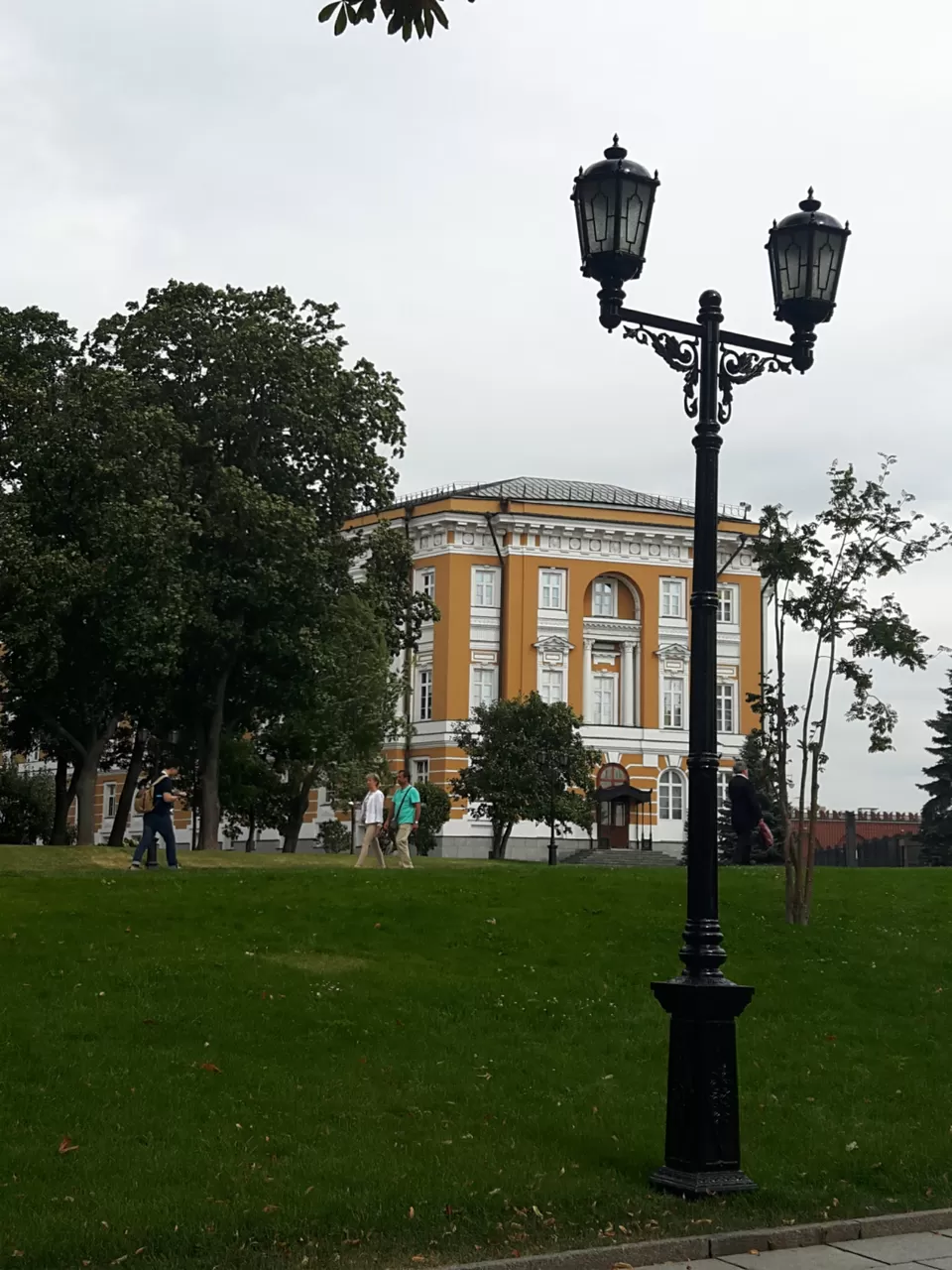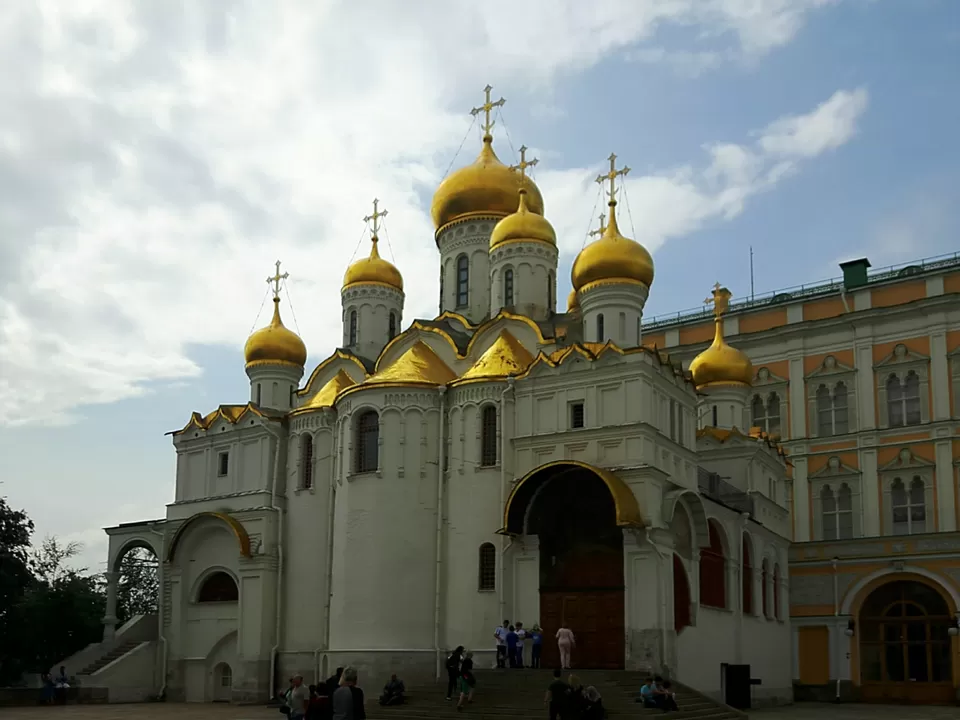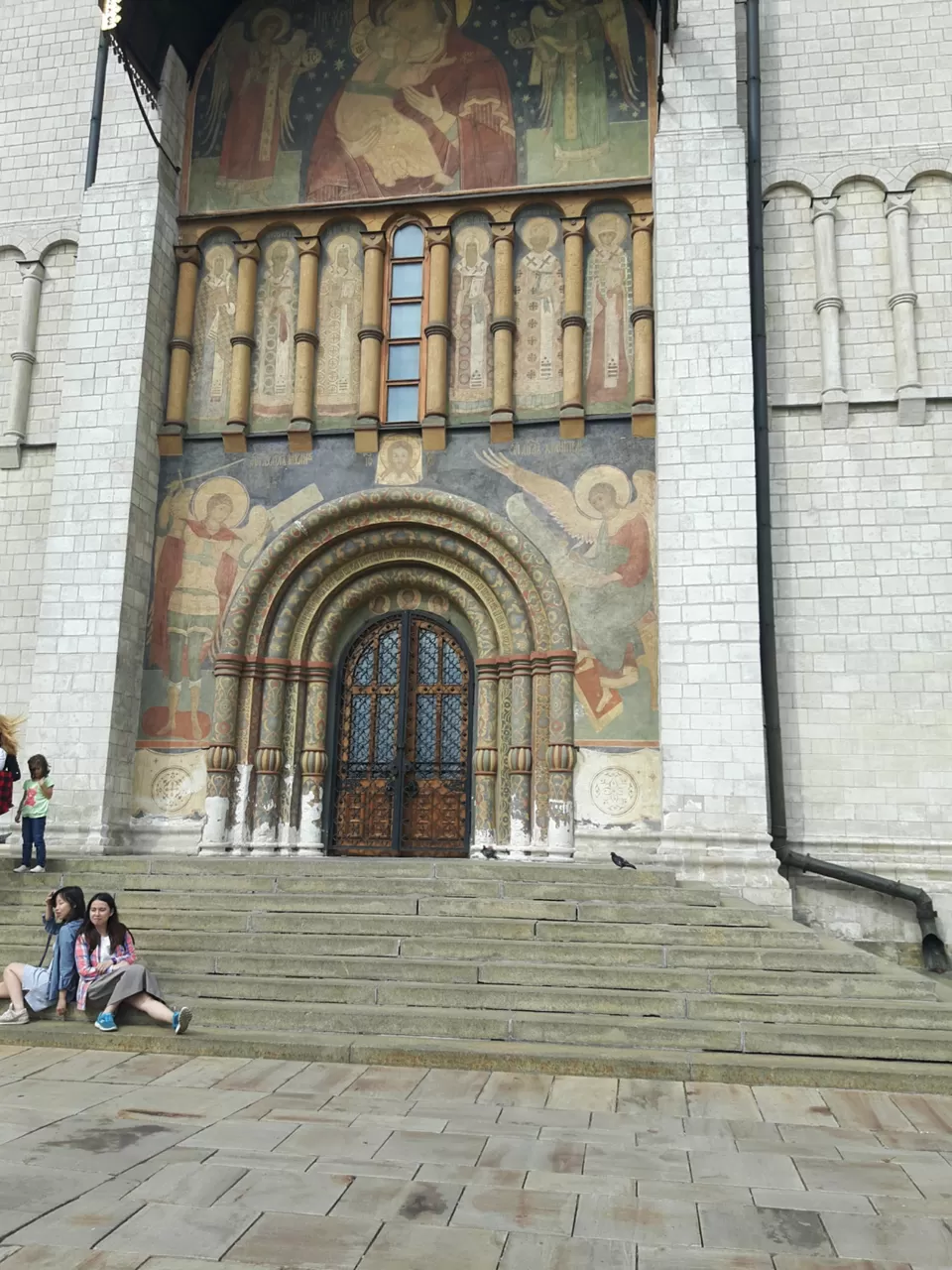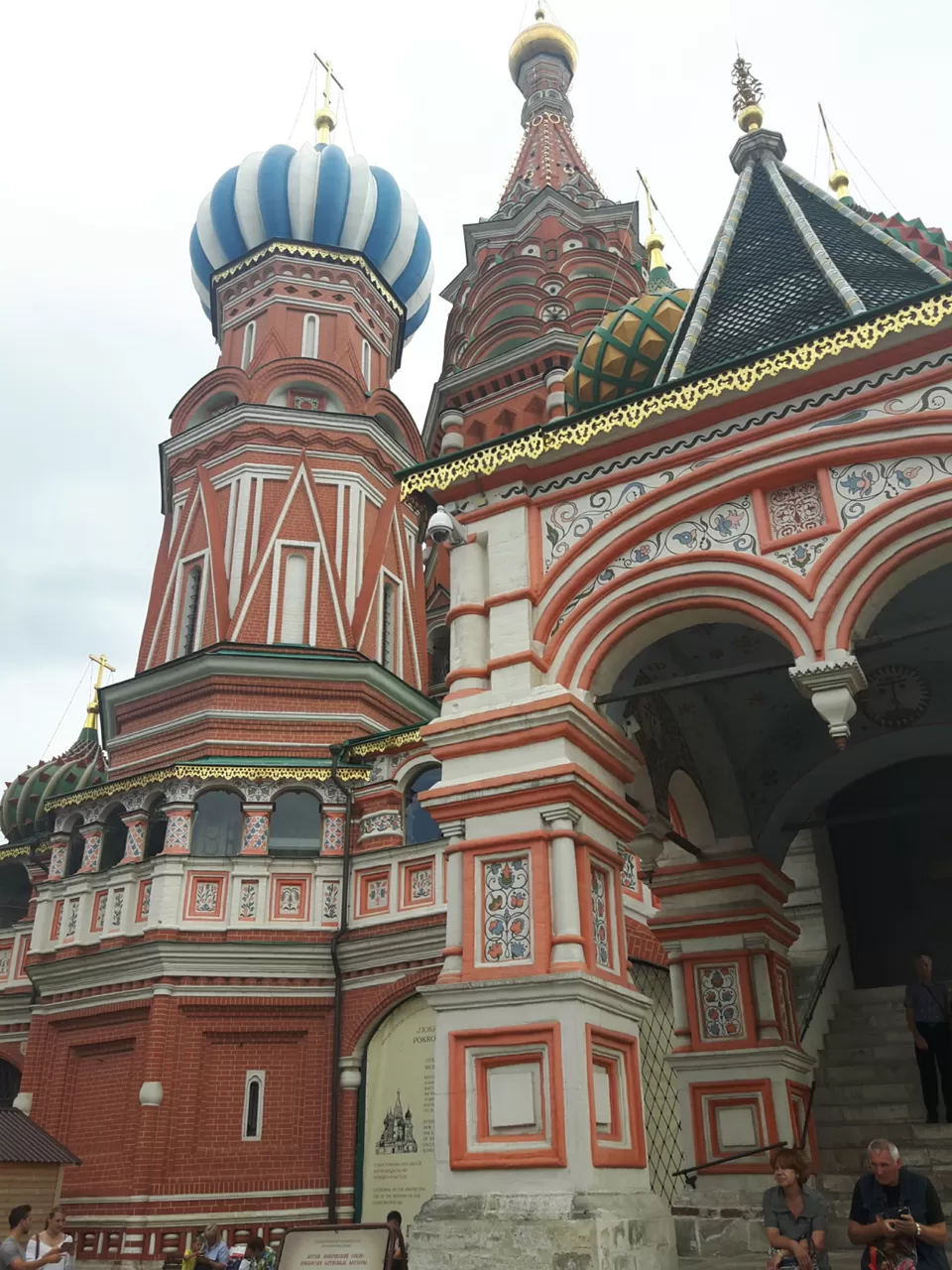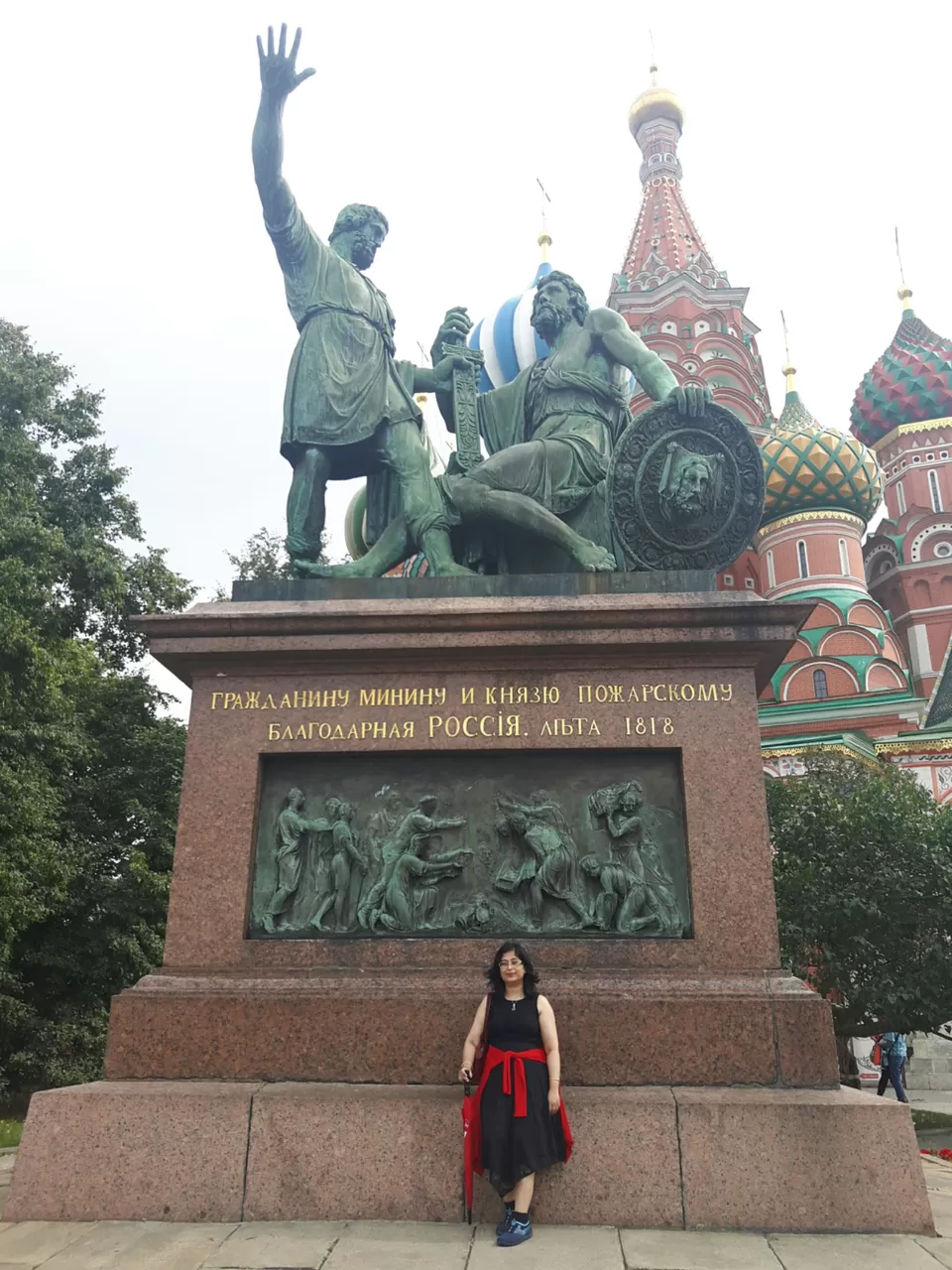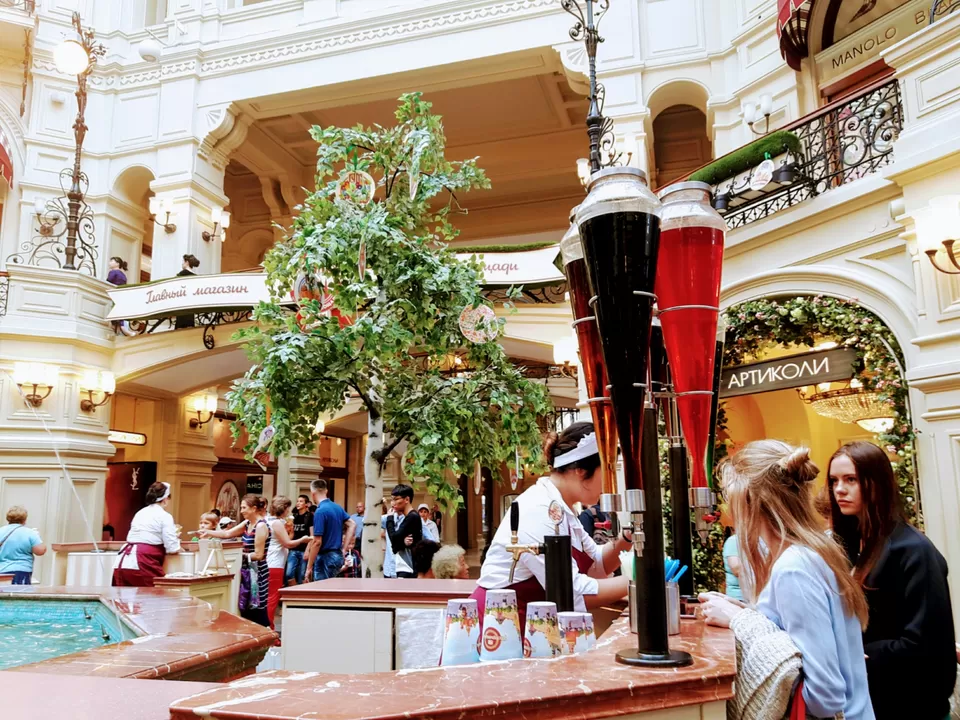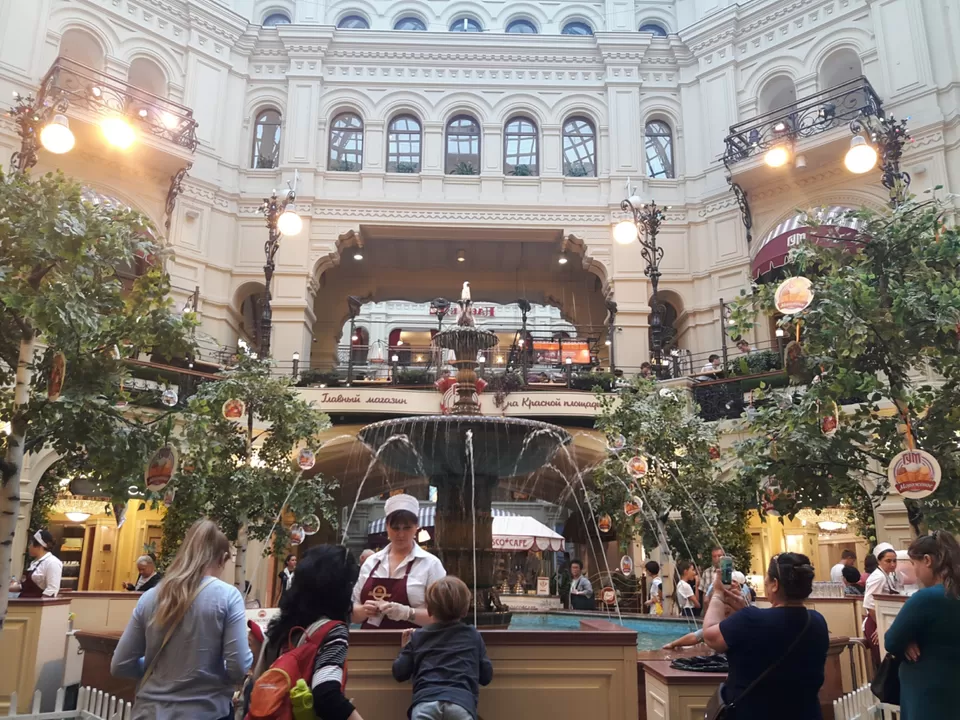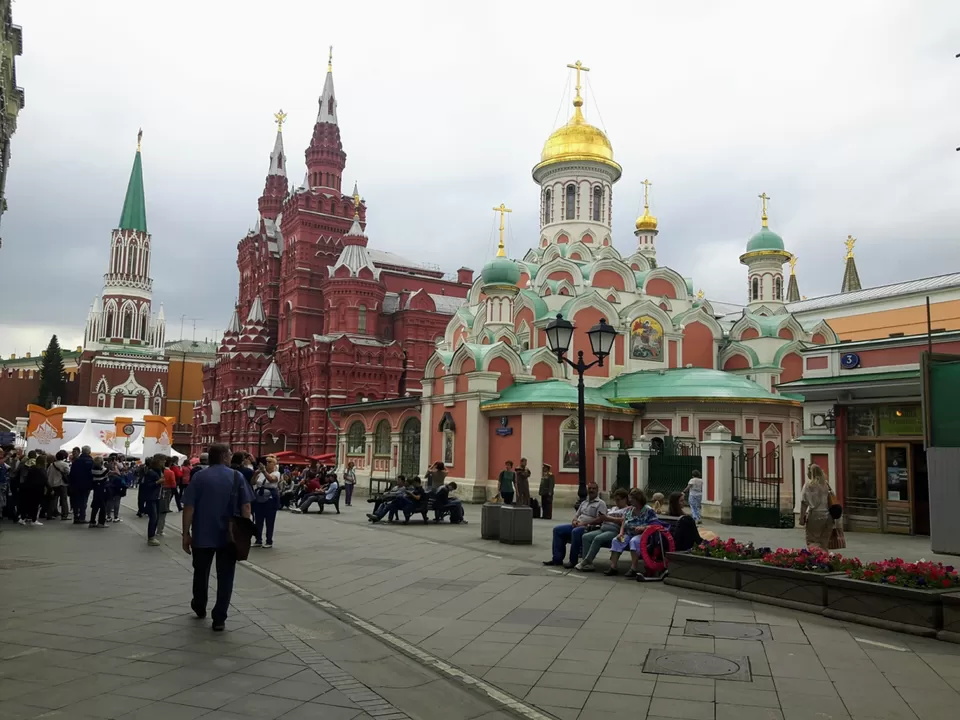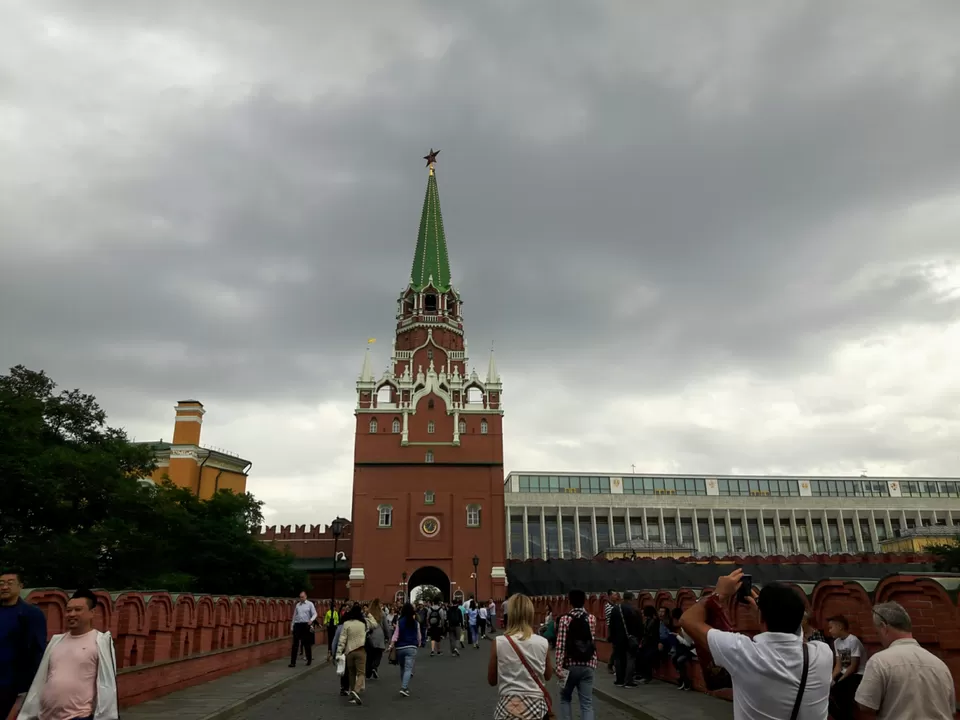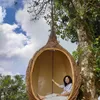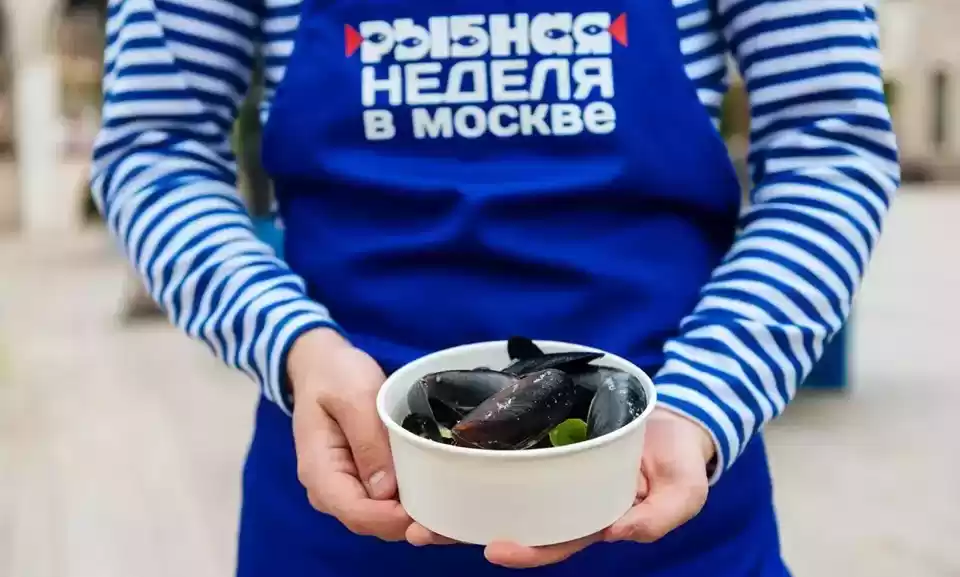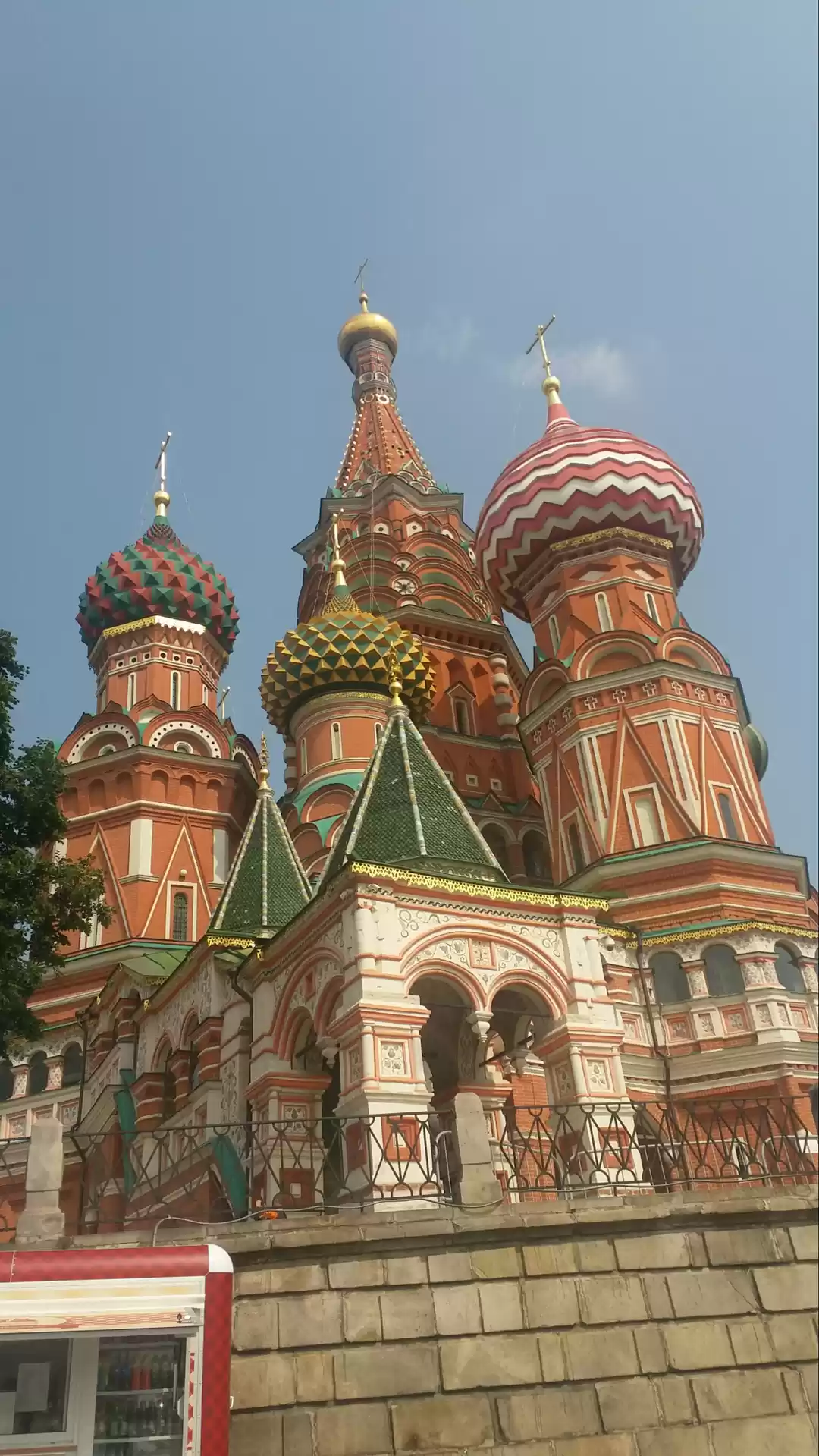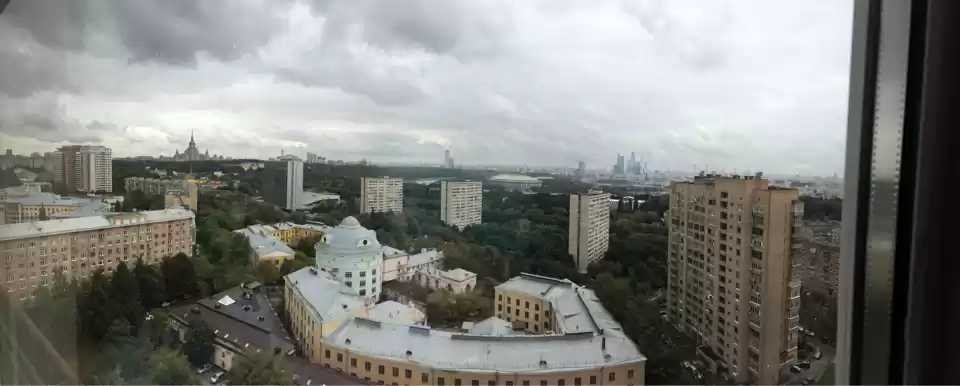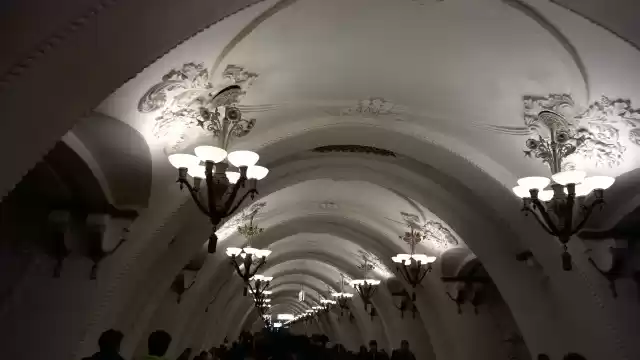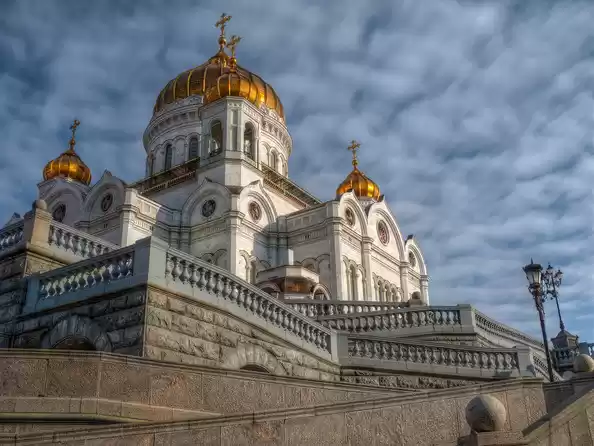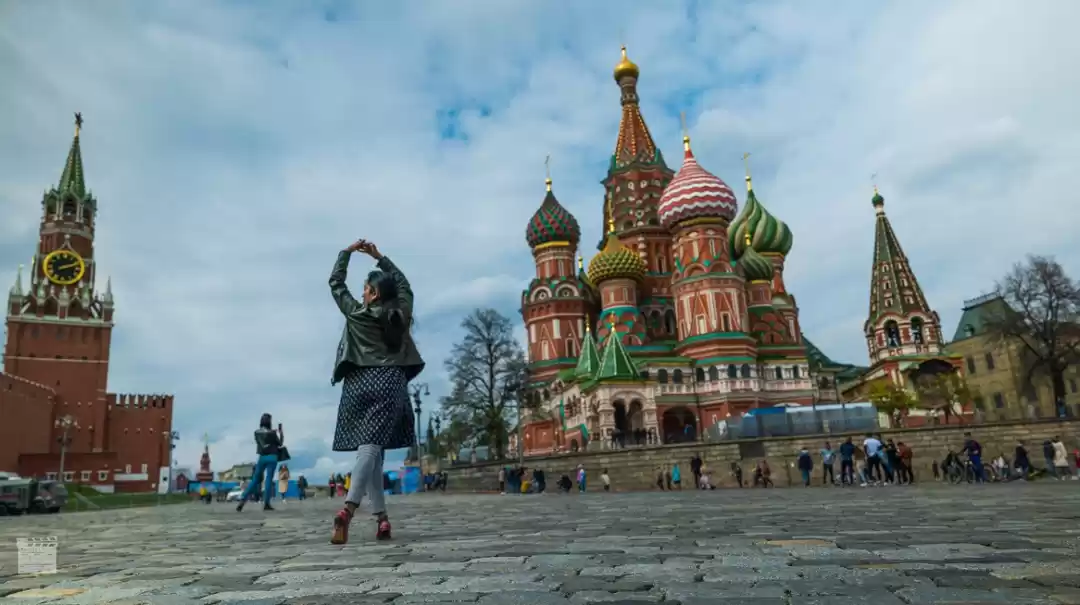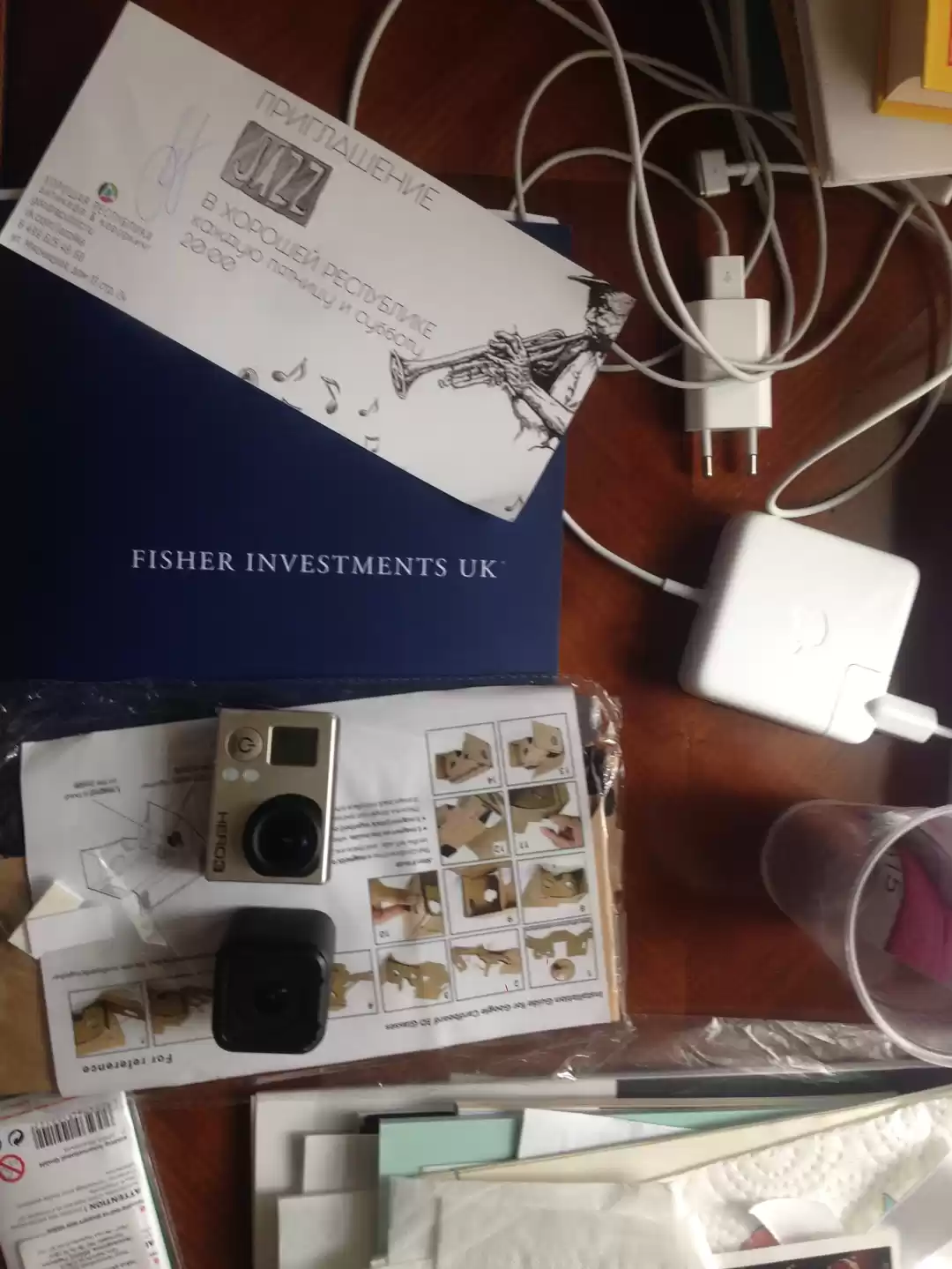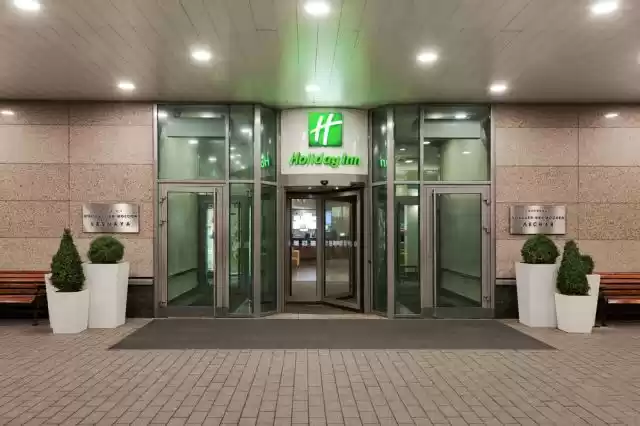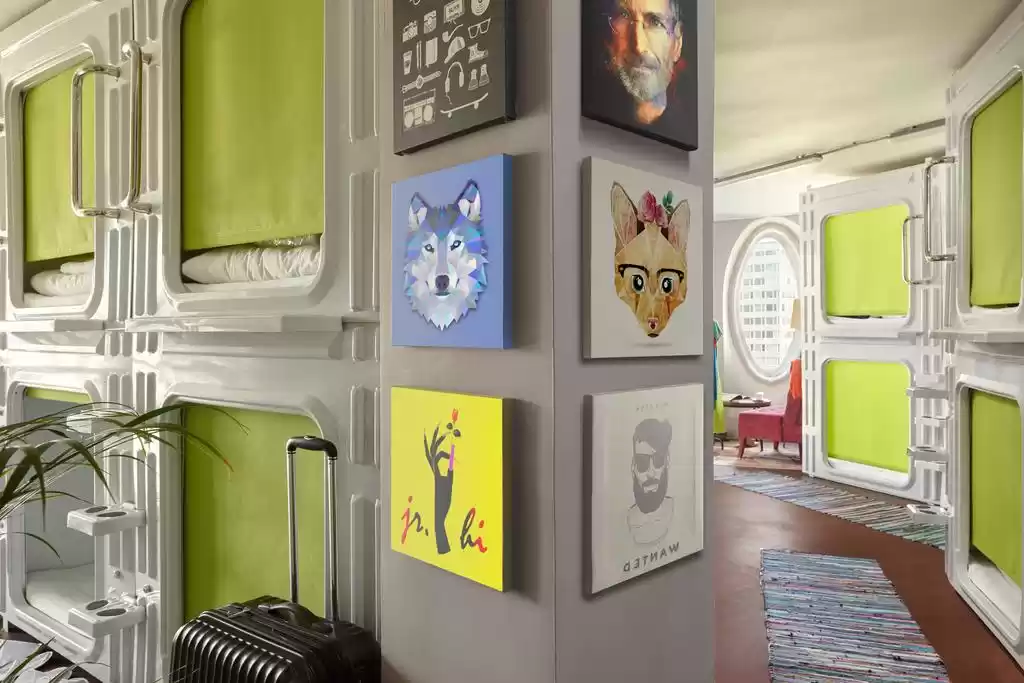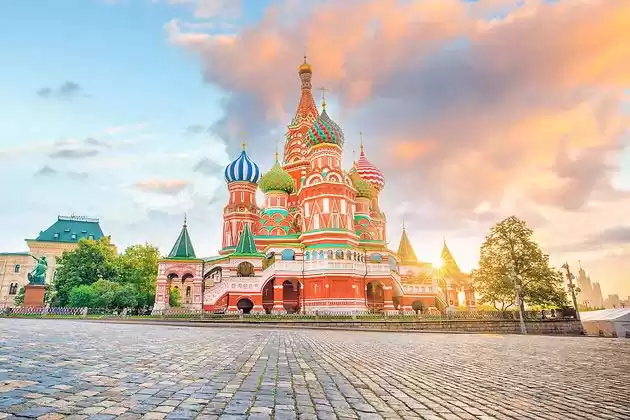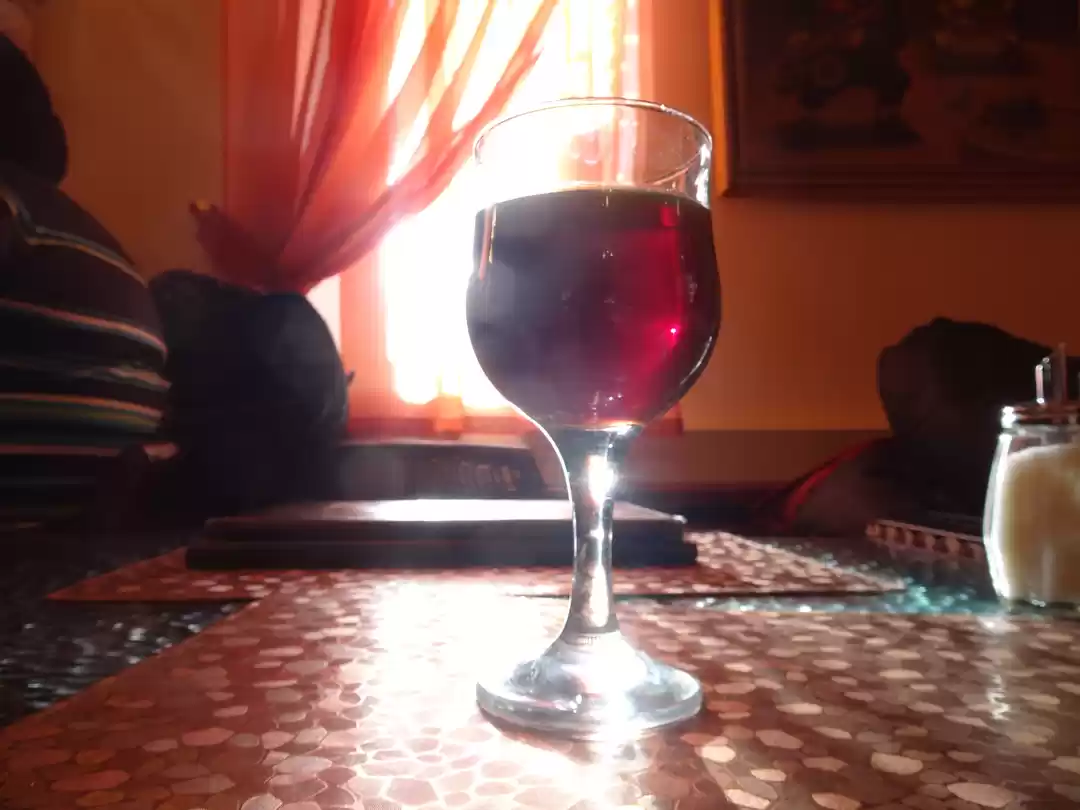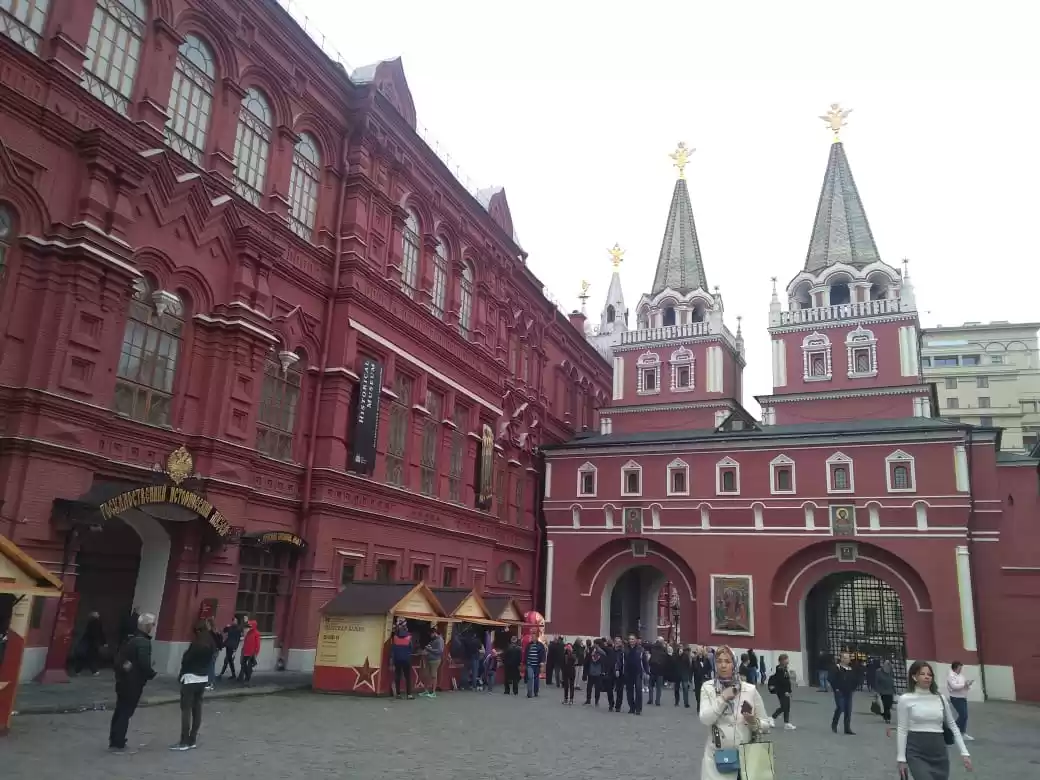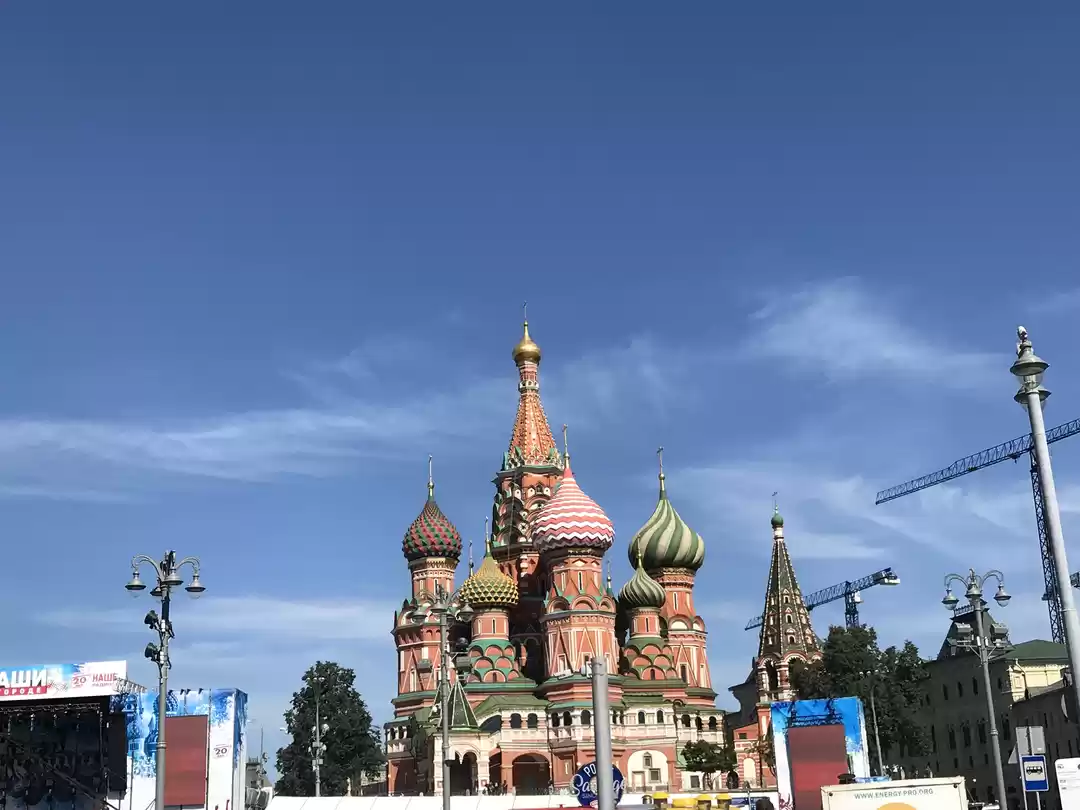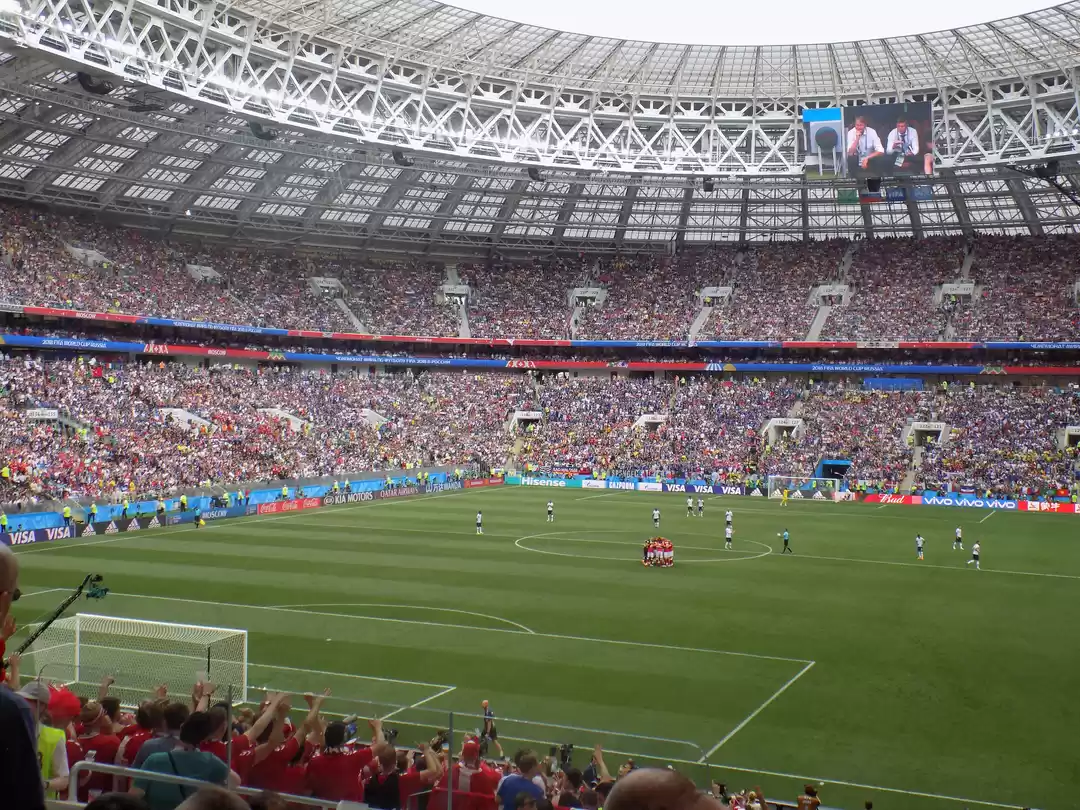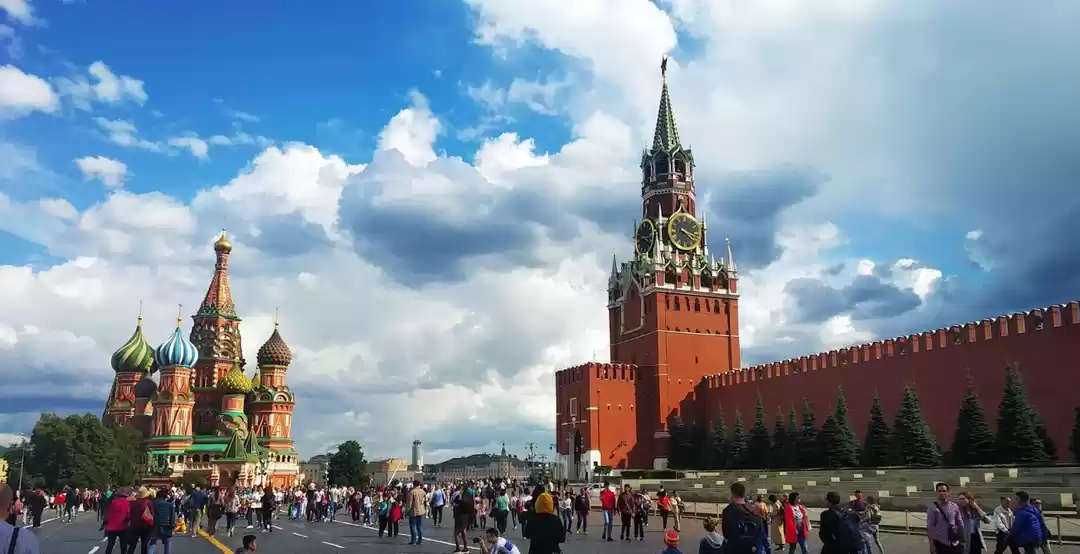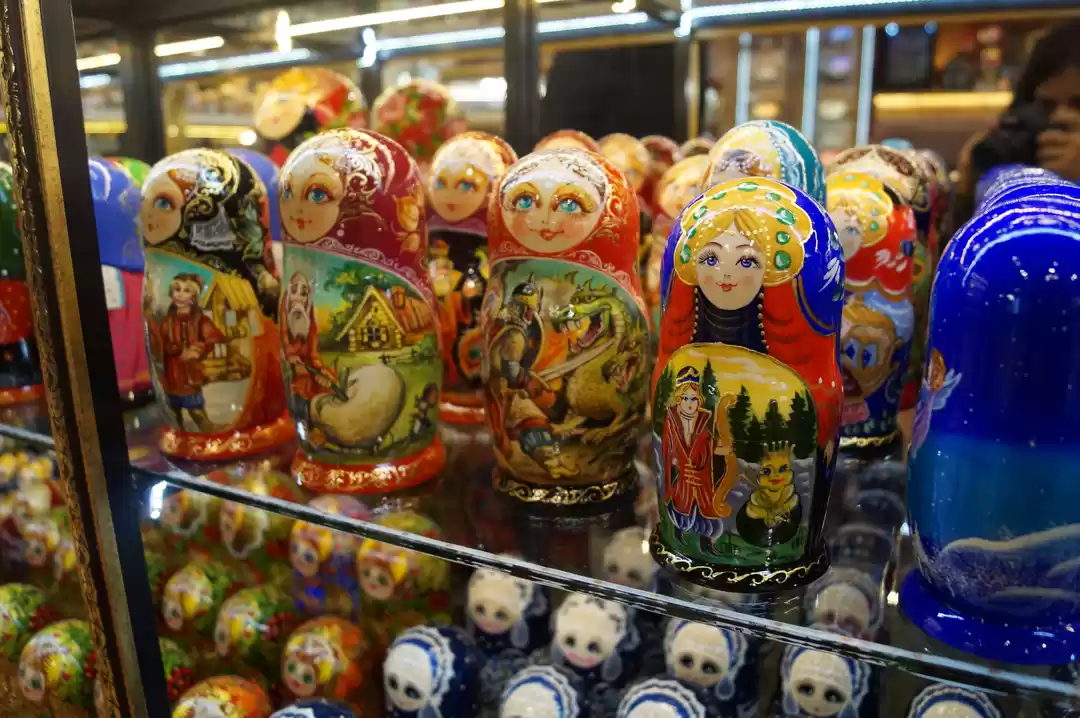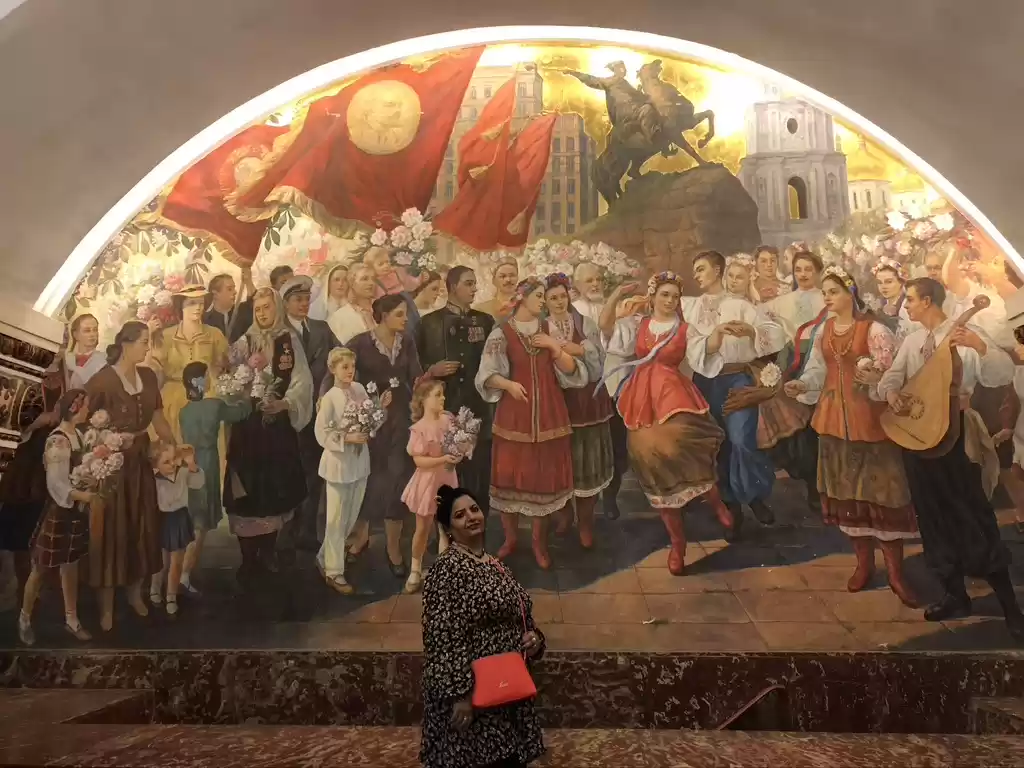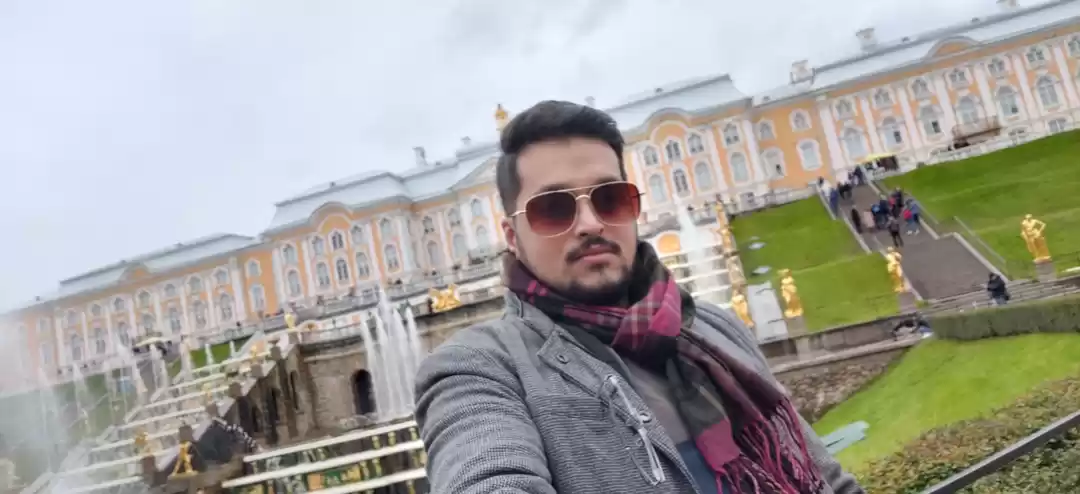
A sense of secrecy, power, awe, and Lenin - these are the images that cropped up in my mind at the mention of Kremlin in my itinerary. The Red Square and Kremlin, the walled complex adjacent to it have been associated with almost all the important events in the history of Russia. These top tourist attractions in Moscow were the first places that we were to visit during our Moscow travel.
In my post Tour of the Russian Wonders: Moscow and St. Petersburg in 5 days, I had briefly touched upon the Kremlin and the Red Square. But that doesn't do the slightest justice to these magnificent places that are steeped in history. So, here I revisit the two famous places in Moscow in greater details:

Red Square: The Main Square of Moscow
Lined with sturdy red buildings on one side and Alexander Garden on the other, the Red Square is the most visited place in Moscow. It dates back to the 16 th century. Back then, the square was meant to serve as the main marketplace for the city of Moscow. It was a place where people congregated for public ceremonies, coronations, parades, and also for executions. Now, it is a heritage site, which is closed to traffic and filled with visitors and tourists. Rock concerts, cultural performances, competitions, bridal parties etc. are held in the square. The Red Square lights up with fireworks and festivities on the New Years Eve.
We enter the square through the Resurrection Gate. The gateway built in 1995 is an exact replica of the original gateway. The original gateway first appeared in 1534 and was reconstructed in 1680, only to be destroyed on the order of Stalin to make way for large-scale Soviet ceremonies in the square. Between the twin arches of the Resurrection Gate is a little Chapel with a blue star-studded dome. A compass embedded in the ground near the chapel marks Kilometre Zero, the point from which the main streets of Moscow originate and branch out.
A prominent red building near the entrance is the State Historical Museum. Built in the period 1875 - 1881, the museum has several artefacts that reflect the history and culture of Russia.
Across the museum is a small cathedral called Kazan Cathedral. It was built in honour of the Virgin of Kazan icon, one of the most revered icons in Moscow. The Cathedral was demolished in 1936 during the communist regime, and it was the first church to be rebuilt in post-communist Moscow.
As we walk through the square, we see the Tomb of the Unknown Soldier. An eternal peace flame burns next to the graves of unknown soldiers. Two guards stand still by the sides to defend the flame. We come to know that the embalmed body of Lenin is preserved in the Lenin's Mausoleum, while Stalin had been buried under the Kremlin wall.
Awestruck by the varied combination of the historical structures, monuments, beautiful gardens, and the horse fountain, we go on a clicking spree.


Our guide Nataliya purchases the Kremlin entry ticket at the counters, after which we head towards the walled complex.
Kremlin: One of Russia's most iconic sights
In Russian, "Kremlin" means "fortress" or "citadel." Although many cities and towns have their own Kremlin, Moscow's Kremlin.is the most magnificent of all. It is the seat of Russia's political power and the official residence of the country's president.
We enter Kremlin through a gate below the star-topped Spasskaya Tower, the tower with the clock and the "Kremlin chimes," that keep the Moscow time.
Across the park on the other side of the road, we can see the official buildings at a distance. That area is not accessible to the public.
Walking through Kremlin, we arrive at the Tsar's Cannon.
Tsar Cannon and Tsar Bell
Tsar Cannon is a fine example of medieval gun casting. The bronze cannon weighing 40 tons is a huge artillery piece. It embodies six centuries of Russian artillery technology. With cannon balls about a meter in diameter, placed beneath its muzzle, the giant cannon mounted on a gun carriage has an impressive presence till date.
At a close distance from the cannon, we could see the Tsar Bell, the largest bell in the world. The bell was commissioned by Empress Anna Ivanovna, but it has never been suspended or rung. A large chunk of the bell had fallen off during a fire in Kremlin.
Just behind the bell is the magnificent Ivan the Great Bell Tower. There are 21 bells in the tower, of which the Assumption Bell was always the first bell to ring on church holidays, a signal that started all the other church bells in Moscow. The bells would also sound the alarm if any enemy was approaching. Until the Russian Revolution, it was the tallest structure in the city. Construction of buildings taller than the bell tower was forbidden.
Cathedral Square in Kremlin
Cathedral Square is the oldest area within Kremlin. Three large cathedrals are located on the square, each has a different history and story.
Cathedral of Assumption with its massive limestone façade, capped with five golden cupolas is the oldest church in Kremlin. It was the private church of the Russian princess and Tsars, meant for the coronation and other royal ceremonies. In the vaulted basement under the cathedral is a collection of the most precious findings in the Kremlin during the 19 th - 20 th centuries.
Nine-golden domes adorn the Cathedral of the Annunciation. The cathedral was built in 1484-1489 in the traditional Moscow old style architecture as the house-fortress of the prince of Moscow.
The Archangel's Cathedral was built in the 16 th century. It was the burial place of the Moscow Princes and Tsars. This tradition continued until the end of 18 th century. In the olden days before and after successful battles: Muscovite princes worshipped the ashes of their ancestors. The cathedral's pillars and walls are covered with portraits of Moscow leaders.
Inside the Kremlin is the Armoury Chamber and the Diamond Fund, which has a collection of Russia's state jewels. These sites not being in our itinerary, we walk out of Kremlin and proceed to the St. Basil's Cathedral.
St. Basil's Cathedral, Moscow
St. Basil's Cathedral, with its eclectic combination of colourful onion domes and spires, is perhaps the most recognizable structure in Russia. Considered a masterpiece of Orthodox art, the cathedral is unique in design and has no parallels in the Russian architecture.
The cathedral was built by Ivan the Terrible (Tsar Ivan IV) in 1560 to commemorate his victory over the Tartar Mongols. Legends state that he purposefully blinded the cathedral's architect so that its design could never be replicated.
The cathedral is said to be originally painted in white to match the white stone of the Kremlin, while the domes were gold. From the 17th century, the façade and domes began to be painted in the striking colours that we see today. We did not enter the cathedral but it is said to have richly painted walls and icons from different periods of the church's long history.
In front of the St Basil's Cathedral is the bronze statue known as the Minin-Pozharsky monument.
GUM Department store in Moscow
On the eastern border of the Red Square, is the GUM (pronounced 'goom'), the premier shopping centre in Moscow.
Built in 1893, it is one of the oldest department stores in Russia, perhaps Russia's first enclosed shopping mall with galleries, arcades and bridges. The store is very well maintained. With its imposing and elegant façade, curved glass ceiling, striking glass and steel architecture, GUM is an exquisite example of pre-Revolution architecture.
Inside the mall, there are some kiosks selling ice creams and Soviet style soda. Cone-shaped tubes are filled with different flavours of syrup, and a separate hose is used to provide the sparkling water. On the recommendation of our guide, I try out a peer flavoured Soviet-style soda. The Soviet version of the soft drink tastes good and fresh.
Our guide tells us that the soda machine, is called a "gazirovka," and these sugary soda drinks used to be very popular with the kids, even before the advent of colas.
After seeing a few shops we walk out of the GUM into the market, where my friends do much of their shopping before we move to the other attractions.
I hope this post gives a fair idea to the readers of the two heritage sites - Red Square and Kremlin. This would remain as the most memorable part of our trip in Moscow. Best pictures of the trip are on Instagram.
Travel Tips:
The Kremlin opens at 10 am and the ticket office opens an hour earlier. It is best to arrive early to avoid crowding and the long queues. The Kremlin is closed on Thursdays. GUM is one of the most expensive shopping centres in Moscow. Any purchases made there might be priced higher than at other places in Moscow. Like this post? Pin It!

References :
http://www.moscow.info/
http://www.abc.net.au/radionational/programs/blueprintforliving/st-basils-moscow/6838420
